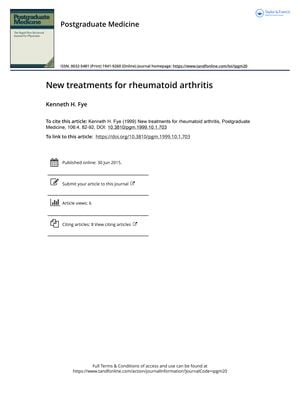New treatments for rheumatoid arthritis
January 1999
in “
Postgraduate Medicine
”

TLDR New drugs for rheumatoid arthritis show improvement but have side effects and are not a cure.
In 1999, the treatment landscape for rheumatoid arthritis (RA) included a range of new drugs, with methotrexate being the standard treatment. New agents such as leflunomide and tumor necrosis factor-alpha (TNF-α) inhibitors like infliximab were emerging, offering different mechanisms of action and showing clinical improvement in RA patients. However, these treatments came with potential side effects like teratogenicity, liver toxicity, and increased infection risk. Infliximab was effective but could lead to the development of antibodies that reduced its efficacy, which could be mitigated by combining it with methotrexate. Etanercept, another TNF-α inhibitor, improved symptoms but required subcutaneous injections and was costly. Interleukin-1 (IL-1) receptor antagonists also showed promise in reducing joint destruction with mild adverse effects. Despite these advancements, there was no cure for RA, and research continued into novel treatments such as matrix metalloproteinase inhibitors, adhesion molecule inhibitors, and gene therapy.